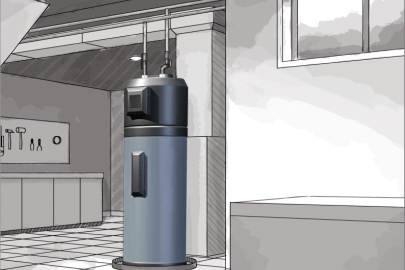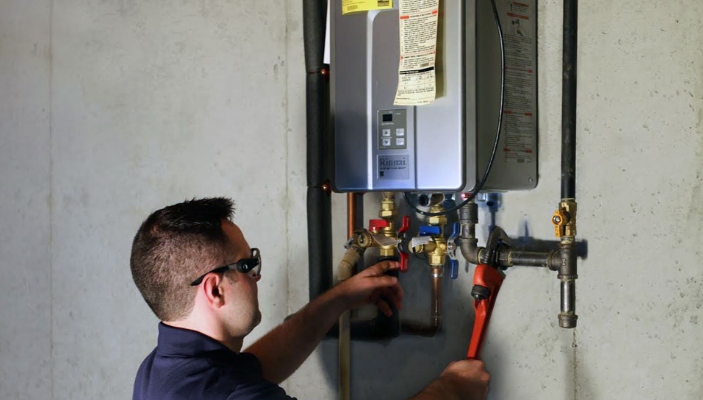How to Extend the Life of Your Home's Hot Water System By MaintenanceEnsuring Longevity of Your Home's Hot Water System: Care TipsExpert Advice on Caring for Your Home's Hot Water System
How to Extend the Life of Your Home's Hot Water System By MaintenanceEnsuring Longevity of Your Home's Hot Water System: Care TipsExpert Advice on Caring for Your Home's Hot Water System
Blog Article
Just how do you feel in relation to How to Maintain a Hot Water Heater in a Few Simple Steps?

Warm water is necessary for daily comfort, whether it's for a refreshing shower or washing recipes. To guarantee your warm water system runs efficiently and lasts much longer, normal maintenance is crucial. This article offers useful pointers and insights on how to keep your home's warm water system to prevent disturbances and costly repairs.
Introduction
Preserving your home's warm water system could appear difficult, however with a couple of simple steps, you can ensure it runs efficiently for several years ahead. This overview covers everything from recognizing your warm water system to do it yourself upkeep tips and knowing when to contact expert aid.
Value of Keeping Your Warm Water System
Regular maintenance not only prolongs the life expectancy of your hot water system yet additionally guarantees it runs effectively. Neglecting upkeep can lead to reduced performance, higher energy bills, and even early failing of the system.
Signs Your Warm Water System Demands Maintenance
Knowing when your warm water system needs attention can stop major issues. Watch out for signs such as inconsistent water temperature, unusual sounds from the heating system, or corroded water.
Purging the Hot Water Heater
Flushing your hot water heater eliminates sediment buildup, improving efficiency and prolonging its life.
Checking and Replacing Anode Rods
Anode poles protect against deterioration inside the container. Inspecting and replacing them when worn out is important.
Complex Problems Needing Professional Aid
Instances consist of major leaks, electric problems, or if your water heater is regularly underperforming.
Routine Expert Upkeep Advantages
Expert upkeep can consist of thorough examinations, tune-ups, and making sure compliance with safety and security requirements.
Evaluating and Adjusting Temperature Setups
Changing the temperature level settings makes sure optimum efficiency and safety and security.
Do It Yourself Tips for Upkeep
You can do several upkeep tasks on your own to keep your warm water system in leading problem.
Checking for Leakages
Frequently inspect pipes and links for leaks, as these can cause water damage and higher expenses.
Understanding Your Warm Water System
Prior to diving into maintenance jobs, it's useful to recognize the basic elements of your warm water system. Generally, this includes the hot water heater itself, pipes, anode rods, and temperature level controls.
Monthly Upkeep Tasks
Normal monthly checks can help catch small issues prior to they rise.
Evaluating Stress Alleviation Valves
Examining the pressure relief valve guarantees it functions properly and protects against too much pressure accumulation.
Insulating Pipes
Shielding hot water pipes minimizes warmth loss and can save energy.
When to Call an Expert
While do it yourself maintenance is valuable, some issues require expert proficiency.
Final thought
Routine upkeep of your home's warm water system is crucial for efficiency, longevity, and cost savings. By adhering to these pointers and recognizing when to look for specialist aid, you can ensure a dependable supply of hot water without unexpected disturbances.
Water Heater Maintenance Tips
Test the TPR Valve
Shut off the power and the cold-water supply valve. Place a bucket under the pipe connected to the temperature-pressure-release (TPR) valve on the top or side of the tank. (This valve opens if the tank pressure gets too high.) Lift the valve’s tab to let some water out, then let go. If water keeps flowing, drain the tank partway, unscrew the old valve with a pipe wrench, and install a new one. Check the Anode Rod
Put a hose to the tank’s drain cock and let out a few gallons of water. Now fit a 1 1/16-inch socket onto the rod’s hex head on top of the heater (or under its top plate) and unscrew the rod. If it’s less than ½ inch thick or coated with calcium, buy a new one, wrap its threads with Teflon tape, put it back in the tank, and tighten securely. Use this segmented rod if headroom above the tank is limited. Drain the Tank and Wash Out Sediment
Drain the remaining water in the tank into the bucket, then stir up the sediment on the tank’s bottom by briefly opening the cold-water supply valve. Drain and repeat until clean water comes out of the hose. Close the drain cock, refill the tank, and turn its power back on. Adjust the Temperature
Find the temperature dial on the side of the tank and unscrew its cover. Adjust the dial to 120 degrees using a flathead screwdriver. For every 10 degrees the temperature is lowered, you can expect to save up to 5 percent in energy costs. Turn the water heater off or the thermostat down to its lowest setting if you plan to be away from home for more than three days. Insulate the Pipes
Buy some self-sticking 3/8-inch-thick foam pipe insulation that matches the pipes’ diameter. Slide the foam over the hot-and cold-water pipes as far as you can reach. Insulating the cold-water pipe prevents condensation in summer. Peel the tape and squeeze the insulation closed. If the pipe is 6 inches or less from the flue, cover it with 1-inch-thick unfaced fiberglass pipe wrap. https://www.thisoldhouse.com/plumbing/21016402/how-to-maintain-a-water-heater

I have been very eager about Water Heater Maintenance Tips You Can't Afford to Forget and I am praying you appreciated the new entry. Appreciated our entry? Please share it. Help others discover it. Many thanks for your time. Come back soon.
Explore Now Report this page